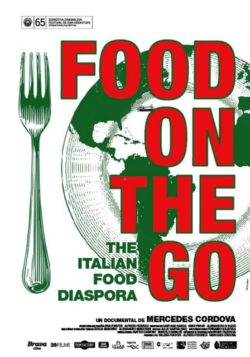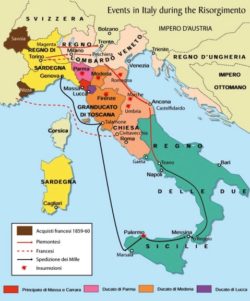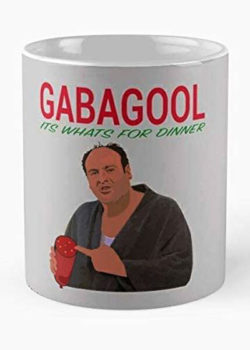Read Time: 4 Minutes Subscribe & Share
An Italian Journey
 It probably won’t shock you to find that, with so many series on cooking, food related films and documentaries, much of what’s available is dreck. After struggling to get through at least three episodes of a few series and slogging through the first 20 minutes of too many movies, I’ve been happy to dump them into my virtual trash bin. But then — eureka. I found this intriguing documentary on the Italian diaspora to North and South America in the late 19th and 20th centuries, as millions moved to the United States and to Argentina. As you will see, this huge groundswell of Italian immigration over half a century introduced the immigrants’ cuisines to their new neighbors, at the same time that the New World was changing their Old World fare. Whether or not you have Italian roots, this is a nice nightcap film. Food On The Go is an Argentinian documentary with some Italian co-production and is available on Netflix.
It probably won’t shock you to find that, with so many series on cooking, food related films and documentaries, much of what’s available is dreck. After struggling to get through at least three episodes of a few series and slogging through the first 20 minutes of too many movies, I’ve been happy to dump them into my virtual trash bin. But then — eureka. I found this intriguing documentary on the Italian diaspora to North and South America in the late 19th and 20th centuries, as millions moved to the United States and to Argentina. As you will see, this huge groundswell of Italian immigration over half a century introduced the immigrants’ cuisines to their new neighbors, at the same time that the New World was changing their Old World fare. Whether or not you have Italian roots, this is a nice nightcap film. Food On The Go is an Argentinian documentary with some Italian co-production and is available on Netflix.
Picking Up The Pieces
Even though Italy’s antecedent is the Roman Empire of 2000 years ago, modern Italy as we know it is a pretty freshly minted country. The various kingdoms in Italy went through numerous wars and social upheavals from the Risorgimento in the 19th century through the downfall of Mussolini in the 20th century. Even the birth of the modern official Italian language was a struggle (a Tuscan dialect probably because that was the language of Dante) as the wealthier, much more industrialized Italian north virtually annexed the poorer southern provinces. There is a famous quote from Massimo d’Azeglio, a noted 19th century painter and politician: “L’Italia è fatta. Restano da fare gli italiani” (Italy has been made. Now it remains to make Italians).
kingdoms in Italy went through numerous wars and social upheavals from the Risorgimento in the 19th century through the downfall of Mussolini in the 20th century. Even the birth of the modern official Italian language was a struggle (a Tuscan dialect probably because that was the language of Dante) as the wealthier, much more industrialized Italian north virtually annexed the poorer southern provinces. There is a famous quote from Massimo d’Azeglio, a noted 19th century painter and politician: “L’Italia è fatta. Restano da fare gli italiani” (Italy has been made. Now it remains to make Italians).
The Long Voyage
 Food On The Go (E Il Cibo Va in Italian) examines, in a somewhat haphazard way, the integration of millions of Italian immigrants into North and South America. Close to 30 million Italians left their homeland, starting in the 1890s through end of World War II, and most were from these southern regions. Impoverished by land reassignment following the dissolution of feudal ownership, plus high taxes and the lack of employment, many left by ship from Palermo, Genoa or Naples and sailed to the US and Argentina. While Italy’s current population is around 59 million, Italian Americans alone number at least 60 million. Those who could afford passage on registered ships were the lucky ones. One of my favorite stories by Leonardo Sciascia is about the other way of reaching the New World. This subtle story titled Il Lungo Viaggio was also made into a short film by Antonio Covi in 1961. I found a translation. It’s worth a read.
Food On The Go (E Il Cibo Va in Italian) examines, in a somewhat haphazard way, the integration of millions of Italian immigrants into North and South America. Close to 30 million Italians left their homeland, starting in the 1890s through end of World War II, and most were from these southern regions. Impoverished by land reassignment following the dissolution of feudal ownership, plus high taxes and the lack of employment, many left by ship from Palermo, Genoa or Naples and sailed to the US and Argentina. While Italy’s current population is around 59 million, Italian Americans alone number at least 60 million. Those who could afford passage on registered ships were the lucky ones. One of my favorite stories by Leonardo Sciascia is about the other way of reaching the New World. This subtle story titled Il Lungo Viaggio was also made into a short film by Antonio Covi in 1961. I found a translation. It’s worth a read.
Gabagool And Mutzadell
Even though Food On The Go does not really reveal its story very well – too many random interviews, for starters – it offers some fabulous old footage of how these immigrants took their skills with food and turned them into businesses both in the US and in Argentina. I had always wondered why here there are such huge servings of “spaghetti and meatballs” and why our pizzas are like cheap buffet plates, when in Italy such presentations do not exist. And in Argentina, what were primarily Italian regional dishes that relied on flour – pizza, pasta – also became overloaded with meat, eggs, and a staggering number of condiments. The Italian/Argentinian version of mozzarella is barely recognizable. Apparently, the largess of meat in both countries was met with a joyful and totally Italian sense of abbondanza.
Many Italian immigrants actually brought not only seeds, but also fig saplings and grape root stocks, and they were skilled in raising fruits and vegetables. Their produce as well as cured meat stalls and pushcarts became so numerous, these new citizens ultimately banded together as a political force. In 1938 New York Mayor Fiorello La Guardia laid out a case against streets filled with chaotic scenes of pushcarts and stalls and literally Americanized and professionalized the retail frenzy. Using Federal money, La Guardia created new indoor markets, such as the Essex Street Market, which required peddlers to apply for a limited number of stalls. At the same time, he fought the Sicilian Mafia which had become a force so overpowering that certain branches known as the agromafia still are players in international food commerce. Now, only about two blocks survive from an original thirty-block area. The film has delightful scenes of the changes to “Italian” dishes in both the US and Argentina, and some are staggering to behold. Meanwhile, the Italian culinary literati in their film interviews, border on outrage.
and professionalized the retail frenzy. Using Federal money, La Guardia created new indoor markets, such as the Essex Street Market, which required peddlers to apply for a limited number of stalls. At the same time, he fought the Sicilian Mafia which had become a force so overpowering that certain branches known as the agromafia still are players in international food commerce. Now, only about two blocks survive from an original thirty-block area. The film has delightful scenes of the changes to “Italian” dishes in both the US and Argentina, and some are staggering to behold. Meanwhile, the Italian culinary literati in their film interviews, border on outrage.
Territory changes what we eat. Abundance of certain foods and a paucity of others can transform a cuisine. As we see in the TV series “The Sopranos”, even the language of food changes. Capicola becomes Gabagool, and Mozzarella is transformed in to Mutzadell according to an article in Atlas Obscura. In the end, the producers show us fascinating footage of brawny and brash Italian American festivals (always with a Catholic overtone) in Little Italy. But for me, the most wistful was the annual re enactment by Argentinian Italians of their forebears’ departure from their homeland to the New World. Definitely far above dreck.

Kitchen Detail shares under the radar recipes, explores the art of cooking, the stories behind food, and the tools that bring it all together, while uncovering the social, political, and environmental truths that shape our culinary world.




Thank you Nancy. I have never joined or participated in any food related exchange until pandemic & Mark Bittman as although my passion, it was my avocation not my vocation. Now I am free to choose and have all the time in the world. I am intriqued about the migration from Grottammare to Chicago Heights. I have more than just a cookbook to share. So thank you so much for waking me up to something I can do with my passion at this late chapter of life.